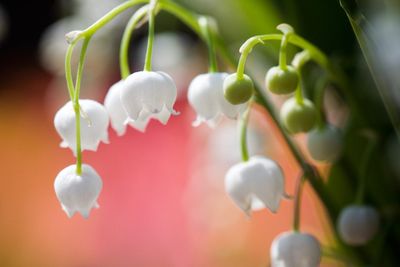Growing Lily of the Valley
Lily of the valley generally does not require much care. As a perennial, you can typically put it in the ground and let it spread to fill out a bed or shady space, watching it come back denser year after year. The conditions that this flower likes include partial shade and moist, loose soil. If it gets too dry, especially, the plant will not flourish. Like other perennial bloomers, lily of the valley flowers in spring and summer and goes dormant with no blooms in fall and winter. It is hardy in cold temperatures, all the way to USDA zone 2. It will not do well in zones higher than 9, where it is too warm in the winter to give it an adequate dormant period. No lily of the valley flowers one year may mean that your plants are not getting exactly what they need, but you can likely figure out and solve the issue to get blooms next year.
Fixing a Lily of the Valley Not Blooming
If your lily of the valley won’t bloom, it may just be that you need to be more patient. Some gardeners have reported that they have boom and bust years with lily of the valley flowers, but you also may not get many blooms until your plants have been well established in the right conditions. Another issue may be overcrowding. These flowers tend to spread and grow densely, but if they get too crowded among one another they may not produce as many blooms. Thin out your bed late this summer or early in the fall and you will probably get more flowers next year. Lily of the valley plants like to have moist, although not soggy, soil. If you had a dry winter or spring, your bed of lily of the valley may have gotten too dry. During drier years, be sure to water them more to encourage blossoming. Having no flowers on lily of the valley plants is a bummer, but it can be fixed. Correct some of these common issues and you are likely to enjoy an abundance of pretty, bell-shaped flowers next spring.
